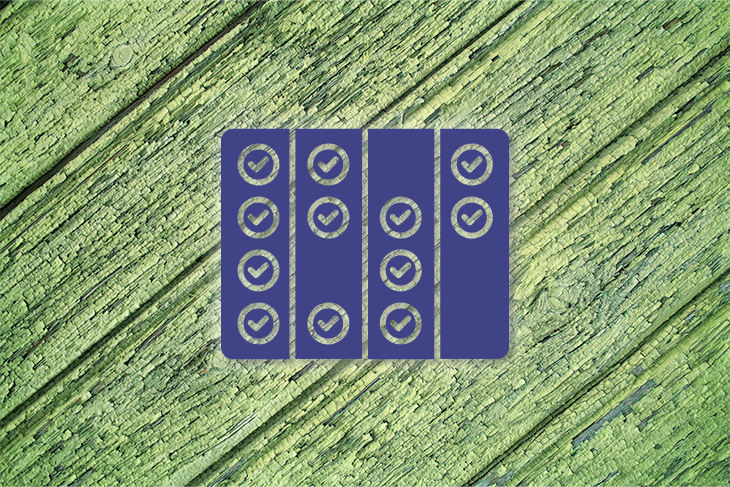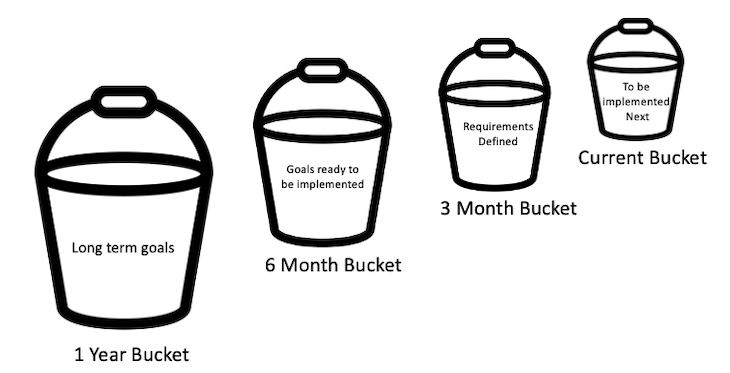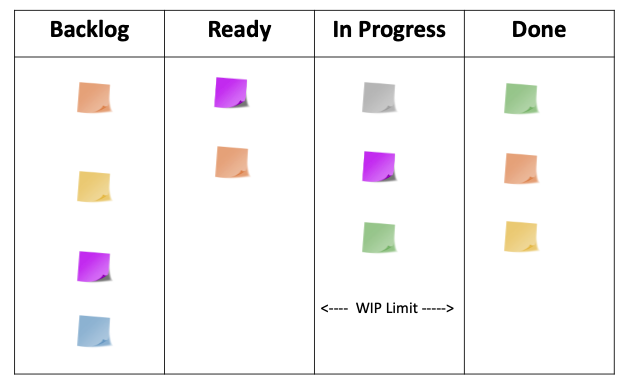In this guide, we’ll define the scrumban methodology, explain how it works, and highlight some advantages of adopting scrumban vs. kanban or scrum individually.

We’ll also walk through steps to implement the scrumban methodology for product managers looking to help their agile teams embrace the best of both worlds.
Scrum and kanban are two very popular agile methodologies. Scrumban, as the name suggests, is a combination of scrum and kanban.
This hybrid methodology combines the best features of both frameworks — the structure and predictability of scrum with the flexibility and visualization of kanban — to make teams more efficient and productive and to help them continuously improve.
Scrum is an agile framework that enables teams to complete smaller chunks of work gradually (rather than working on a large chunk of work continuously) to deliver a working product. Agile methodologies are designed to help product teams embrace the values and principles outlined in the Agile Manifesto, including adaptability and commitment to continuous improvement.
In scrum, the product team works on a defined set of tasks in a time-boxed event called sprints. Sprints can last from one to two weeks. At the end of the sprint, stakeholders review the work completed and offer feedback to those building the product.
Scrum revolves around a set of scrum ceremonies, including sprint planning, daily scrum, sprint review, retrospective, and backlog refinement.
The daily scrum meeting is held every morning to track the team’s progress and remove any blockers that need to be resolved. Product owners sort and prioritize the backlog, while independent teams work on the prioritized task list to deliver in small increments at the end of each sprint.
Kanban is derived from the manufacturing industry and focuses on process steps. The Japanese word “kanban” means a visual board.
Teams employing the kanban methodology display work items in the form of cards on a board. These cards then move through the various swim lanes that represent process steps, such as “Ready,” “In progress,” “Testing,” “Closed,” etc.
The kanban approach enables the whole team to visualize what is being worked on and where things are stuck. The cards can be moved backward if needed. This way, the teams can focus on improving the lead time at each process step to close the items more quickly — in other words, delivering value to the customer faster.
Scrum by definition is structured and rigid due to the necessity for regular iteration planning, reviews, and retrospectives. Kanban adds continuous improvement, visualization, and flexibility to the scrum process.
A hybrid model known as scrumban is particularly valuable for teams challenged by the limitations of scrum and kanban as individual methodologies. Scrumban was developed to facilitate the transition to kanban from scrum. Gradually, it became popular due to the advantages scrumban has over both scrum and kanban.
Organizations adopt scrumban because it combines the positives of both scrum and kanban while editing out the negatives. It is particularly useful for projects that require continuous flow.
Below are some of the most significant advantages of adopting the scrumban methodology in your organization:
Scrumban does not specify any team roles; the team is self-organizing and flexible in terms of how they work. Team members can choose their own tasks with minimal involvement from managers. This environment enables teams to be more efficient and productive.
Scrumban’s rules and guidelines are simple so they can be adopted in any industry. The visual board helps the team stay on track and the deadline-free environment enables it to be flexible and adapt to changing requirements.
Focusing on the process steps and endeavoring to increase lead time can help product teams reduce unnecessary steps and continuously improve processes. The goal is to proactively anticipate and remove as many hurdles as possible to empower the team to deliver better features more efficiently.
Scrumban requires fewer meetings than the classic scrum approach, which can be meeting-heavy. Under scrumban, planning meetings can be held on an as-needed basis.
With fewer scheduled meetings, team members have more time and energy to focus on their tasks and become more efficient at completing them.
In scrumban, the board is never cleared like in scrum; it represents a continuous flow of items from column to column. That’s why projects that have a continuous flow of work and no definitive deadline are particularly well-suited to the scrumban approach.
Scrumban enables on-demand planning, so when a team needs to work on a certain set of tasks in the iteration, it starts pulling tasks from the Ready list. Planning meetings are scheduled based on when that list is depleted, which is dependent on how fast the team finishes the current set of tasks.
Scrumban enables the team to plan the tasks as per the company’s long-term goals and vision via bucket-size planning.

For example, you might categorize backlog items into four buckets defined by the rough, estimated timetable for completion:
The scrumban methodology combines the structure of scrum and the continuous improvement properties of kanban to optimize the team’s effort while also affording it flexibility to adapt to change as needed.
Below let’s highlight some of the core principles of scrumban.
To implement the scrumban methodology for you agile product team, follow the steps outlined below:

Create a column for each process step. Team members move the cards from column to column as they complete each step towards completion.
It’s important to create only the required number of columns. Be sure to not create more than a few columns so as not to overcomplicate the process.
Below is an example of a scrumban board. As you can see, it has a few items in each column.
There is a WIP limit set on items in the In Progress column; this indicates that only a fixed number of items can populate this column at any given time.

It’s crucial to set a limit on WIP items for each column as a team. This establishes a limit on the amount of work being done at any point of time.
WIP limits are meant to keep team members focused on a limited number of tasks and ensure meaningful progress toward completing them. When the team is overwhelmed with simultaneously ongoing tasks, productivity suffers.
There are no specific roles — e.g., scrum master, product owner, etc. — in scrumban. Team members have the autonomy to choose tasks that they want to work on.
Together, the team decides what needs to be done first and discusses the list of prioritized tasks. As team members complete their current task, they start pulling the prioritized tasks in their queue.
Although there is no scrum master to lead it, it’s always good for the team to have a daily standup meeting to catch up on what each person is doing and review the prioritized task list.
Team members can take turns running the daily standup meeting. Sprint planning can be done every two weeks or as needed whenever a prioritized list of tasks must be generated.
The scrumban methodology isn’t for every organization. However, if your agile teams are working on long-term projects, struggling with the rigidity of scrum, or lacking the resources to implement scrum, scrumban can be a flexible, lightweight alternative.
The scrumban methodology is particularly valuable for projects that generate a continuous queue of work with no defined deadline for completion. Technical support and maintenance projects where the work is ongoing and there is no definitive completion date are also good candidates to adopt the scrumban approach.
The scrum methodology, with its rigid ceremonies and strict deadlines, can put your agile team under a lot of pressure. Scrumban enables product managers to provide a flexible environment in which the team can work at its own pace and drive efficiency in ways that consider the team’s skills, available resources, and other unique variables.
Scrumban does not have a hierarchy or defined roles (e.g., product owner, scrum master, etc.). For this reason, if the company does not have enough resources to implement the scrum methodology, scrumban could be a good alternative approach.
Featured image source: IconScout

LogRocket identifies friction points in the user experience so you can make informed decisions about product and design changes that must happen to hit your goals.
With LogRocket, you can understand the scope of the issues affecting your product and prioritize the changes that need to be made. LogRocket simplifies workflows by allowing Engineering, Product, UX, and Design teams to work from the same data as you, eliminating any confusion about what needs to be done.
Get your teams on the same page — try LogRocket today.

Most teams fail at autonomy. Learn how clear rules help product teams move faster without micromanagement.

A practical framework for PMs to use AI in ideation without sacrificing judgment, strategy, or decision quality.

A practical five minute revenue estimation method to help product managers compare ideas, drop low impact features, and prioritize smarter.

A practical guide for PMs who want to stop being bottlenecks, delegate smarter, and lead teams effectively with a clear ownership framework.